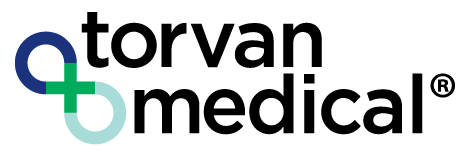Introduction
Endoscopes are indispensable tools in modern healthcare, enabling minimally invasive procedures that improve patient outcomes while reducing recovery times. However, their complex design pose significant challenges in cleaning and sterilization, making proper endoscope reprocessing essential for preventing cross-contamination and hospital-acquired infections (HAIs).
Inadequate endoscope reprocessing is constant risk factor for infection outbreaks in hospitals. Unlike many other medical instruments, flexible endoscopes contain long, narrow channels that can harbor dangerous microorganisms if not thoroughly cleaned and disinfected. Failure to adhere to proper reprocessing protocols could lead to serious consequences, including patient infections, regulatory violations, and costly legal liabilities.
To ensure safe, consistent, and validated reprocessing, hospitals must implement practices that comply with stringent guidelines set by organizations like the Association for the Advancement of Medical Instrumentation (AAMI), the CDC, and the World Health Organization (WHO). Many hospitals are increasingly looking to invest in advanced cleaning technologies that may help them meet these important benchmarks.
Steps in the Endoscope Reprocessing Cycle
Endoscope reprocessing is a multi-step process designed to ensure thorough decontamination and prevent microbial contamination before re-use. Each stage plays a critical role in patient safety.
1. Pre-Treatment: Immediate Flushing After Use
The reprocessing cycle begins immediately after the procedure, while the endoscope is still in the procedure room. Technicians flush the endoscope channels with detergent solution and wipe down external surfaces.
Pre-treatment is meant to prevent blood, mucus, and organic debris from drying and forming biofilm (which can make later cleaning steps more difficult). Quick and efficient pre-treatment can also help minimize contamination risks when the scope reaches the central reprocessing area.
2. Leak Testing: Preserving Scope Integrity
Dry and wet leak testing are both meant to identify any tears or openings in the scope’s internal and external sheath. Identifying leaks can help avoid costly repairs caused by water infiltrating the working elements of the scope.
3. Manual Cleaning: Removing Organic Debris, Bioburden & Biofilm
After transport to the reprocessing room, the endoscope undergoes manual cleaning in a dedicated reprocessing sink. This step is one of the most labor-intensive aspects of endoscope reprocessing and involves:
- Soaking the scope in cleaning detergent solution to break down proteins and organic material.
- Brushing internal channels and external surfaces to remove debris.
- Flushing lumens with a specialized cleaning solution for a period of time or a number of mls per channel, as recommended by the IFU. This can be done manually with a syringe or by using an automated flushing pump.
Why is this step so critical? If an endoscope is not properly decontaminated, patients can be at higher risk for HAI’s if it is reused. Without thorough manual cleaning, further disinfection and/or sterilization processes may not be fully effective.
4. High-Level Disinfection (HLD): Mitigating Transfer of Microorganisms
After manual cleaning, the endoscope undergoes a thorough disinfection process to eliminate microorganisms such bacteria, fungi, and viruses. However, because flexible endoscopes are heat-sensitive, traditional sterilization methods (such as autoclaving) are not always an option.
As a result, this step involves treating the scope with high-level disinfectants such as glutaraldehyde, peracetic acid, or hydrogen peroxide-based solutions, either manually or with an automated endoscope reprocessor (AER). The effectiveness of these disinfectants is often dependant on strict temperature, time, and concentration controls.
5. Drying & Storage: Preventing Bacterial Growth
The final step in reprocessing is often overlooked, yet it plays a critical role in preventing bacterial growth. Residual moisture in the internal channels can provide ideal conditions for microbial growth. Improper drying and storing can lead to contamination even after high-level disinfection.
Best practices for drying and storing include:
- Forced air channel-purge systems to reduce internal moisture.
- Storage in a HEPA-filtered cabinet with continuous airflow.
- Use of tracking systems to ensure each endoscope follows a validated reprocessing cycle before reuse.
Challenges in Endoscope Reprocessing
Despite strict industry regulations, hospitals may face several persistent challenges in achieving consistent, effective endoscope reprocessing:
1. Inconsistent Drying Leading to Microbial Contamination
Residual moisture in improperly dried endoscopes can encourage microbial growth even after processing. Manual drying methods are not always sufficient, especially for devices with complex lumens. Without proper airflow systems, endoscopes may retain moisture in their internal channels, providing an environment for bacterial growth even when stored in clean environments.
2. Inefficient Manual Cleaning Methods
Manual cleaning is both labor-intensive and prone to human error. Variability in technique, staff fatigue, and time constraints can lead to inadequate removal of biofilm and organic debris. Without consistent processes, hospitals may risk non-compliance with regulatory standards and increased infection rates.
3. Variability in Compliance and Workflow Efficiency
Hospitals and outpatient centers must strictly adhere to CDC, AAMI, and WHO guidelines, but many facilities may struggle with compliance due to:
- Lack of standardized training for technicians.
- Inconsistent documentation and tracking of reprocessing cycles.
- Aging equipment that does not meet current standards.
The Role of Advanced Reprocessing Equipment
To address these challenges, hospitals are increasingly investing in automated, validated reprocessing solutions that enhance efficiency and reduce contamination risks. Torvan Medical provides industry-leading equipment designed for consistency, infection prevention, and staff safety.
TPS Flushing Pump – Ensuring Thorough Cleaning of Endoscope Channels
Torvan Medical’s TPS Flushing Pump automates the flushing of endoscope channels, providing a consistent, high-pressure flow for the removal of residual contaminants. This system can help reduce the impact of human error and improve overall cleaning effectiveness.
EndoCab™ – HEPA-Filtered Storage with Channel Purge for Faster Drying
Torvan’s EndoCab™ drying cabinet provides continuous HEPA-filtered airflow to prevent moisture buildup and microbial growth. Key features include:
- Automated channel purge system for thorough internal drying.
- Secure, organized storage for compliance traceability.
- Customizable configurations for various endoscope models.
CleanStation Reprocessing Sink – Reducing Splashing & Contamination
Reprocessing sinks are a crucial component of manual cleaning, and Torvan’s CleanStation Reprocessing Sink is specifically designed for infection control:
- Marine edges and bottom-filling basins help reduce splashing and aerosolization during the cleaning process.
- Height-adjustable design improves ergonomics and reduces strain.
- Integrated features for instrument organization help streamline workflow.
Together, Torvan Medical’s EndoCab™, CleanStation Reprocessing Sink, and TPS Flushing Pump are an integrated solution that can enhance infection control, streamline reprocessing, and help facilities develop processes compliant with industry standards.
Torvan solutions also integrate digital tracking and documentation, assisting hospitals in remaining compliant with industry standards while increasing confidence that every endoscope has been properly processed before reuse.
Conclusion
With increasing regulatory scrutiny on infection control and the growing complexity of endoscope designs, hospitals can increasingly benefit from validated, automated, and scalable solutions that go beyond basic cleaning.
By investing in advanced endoscope reprocessing equipment such as Torvan Medical’s EndoCab™, CleanStation Reprocessing Sink, and TPS Flushing Pump, healthcare facilities can develop processes that:
- Reduce infection risks and improve patient safety.
- Ensure consistent compliance with AAMI, CDC, and WHO standards.
- Improve operational efficiency and extend the lifespan of their endoscopes.
Endoscope reprocessing isn’t just about meeting regulations—it’s about protecting patients, staff, and hospital reputations. The future of endoscope reprocessing lies in automation, efficiency, and compliance, and Torvan Medical is leading the way.


